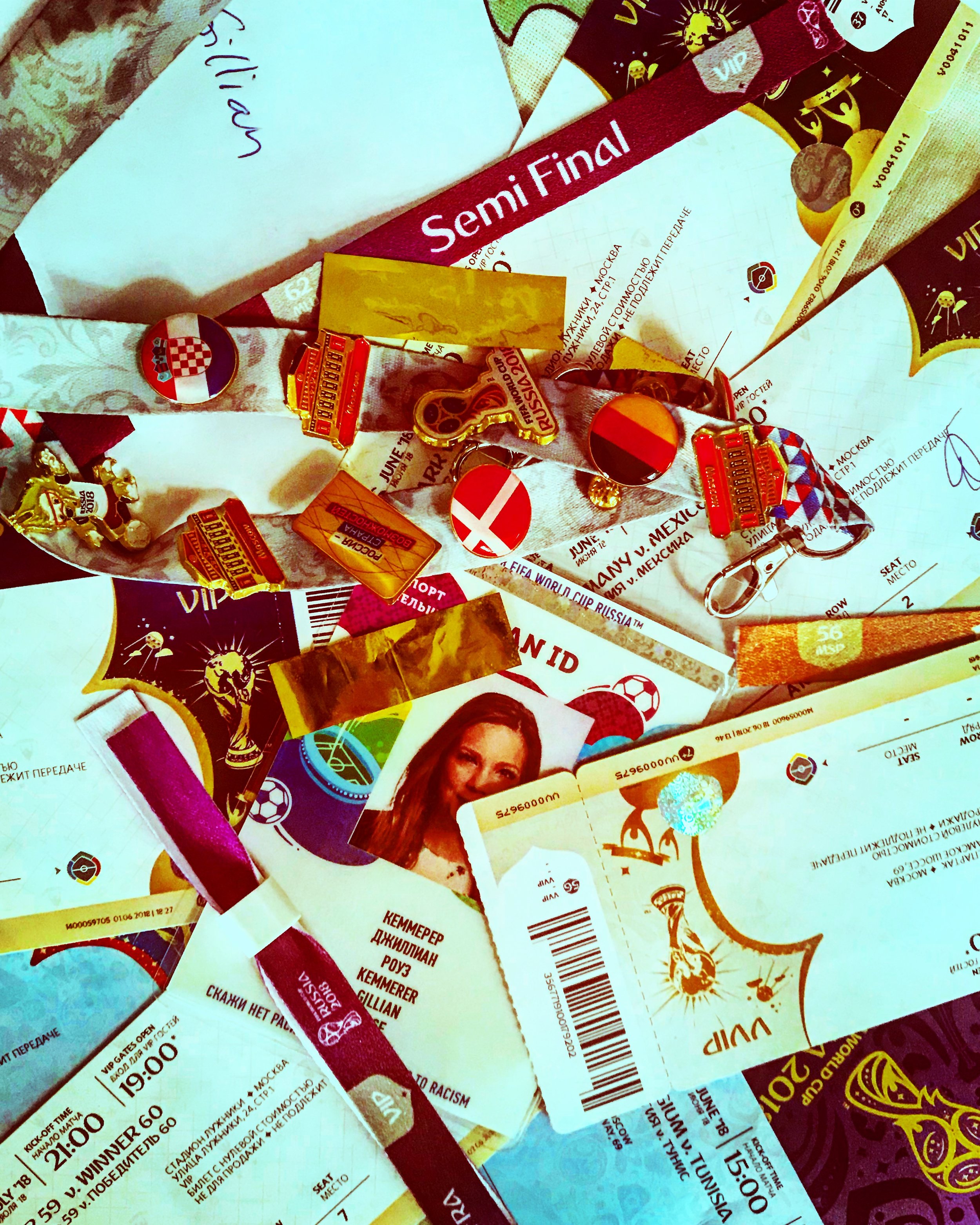WORLD CUP LEGACY, AS TIME GOES BY
Imagine that the film Casablanca took place in 2018. Instead of Morocco, the destination was Russia.
A dashing Humphrey Bogart prepares to leave the indomitable Ingrid Bergman on the runway, but before they part ways, he utters that heartbreaking line, etched in Hollywood lore forever:
“We’ll always have….Samara.”
And with that, he tosses her the keys to Cosmos Arena (capacity: 41,000) and walks away, leaving us to cry as the credits roll and Dooley Wilson croons "As Time Goes By."
FIFA did not leave Russia with quite the romantic panache of Rick Blaine, but the question of legacy lingers in the air after a World Cup as much as it weighs on the audience at the conclusion of Casablanca. What becomes of that charmed moment in time - assiduously preserved in our hearts, and rather permanently etched into the skylines of Russia’s host cities?
The 2018 World Cup is reportedly among the most expensive history, totaling $11 billion at the low end of estimates (at the high end, $14 billion - source: ESPN/RBK). Foreigners forked out approximately $1.5 billion in cash over the month-long fan fest, with one Chinese credit card allegedly making purchases in 11 cities.
While quantifying every possible impact of a sporting mega event is difficult, academics have hacked away at this question from a variety of fascinating lenses, including sustainability, stadium development and surveillance. I’d like to present three interesting perspectives from the relevant literature on the subject, with a nod to those who have dared to pose such a daunting research question.
The Rocky Road to Legacy: Lessons from the 2010 FIFA World Cup South Africa Stadium Program
Eamonn Molloy and Trish Chetty, University of Oxford
Central research question: The 2010 FIFA World Cup Stadium Program resulted in “an oversupply of over-designed and underutilized stadiums.” What were the management problems that contributed to the divergence between expected and actual legacy?
South Africa spent nearly $4 billion to deliver the 2010 World Cup. While the idea of a legacy is often used to justify bidding for a sporting event, the “field of dreams” approach (if we build it, they will come) has persistently been proven wrong — as seen in the "white elephant" phenomenon of expensive, defunct stadiums.
Molloy and Chetty conducted nearly forty hours of interviews with project and stadium management to determine where South Africa 2010 went wrong, and the results are provocative. Here are just two highlights (but this paper is extremely worth reading in full):
- Over-Optimistic Estimating. The competitive nature of the World Cup bid process resulted in over-optimistic submissions at three major junctures, leading to an overrun of costs at all ten stadium sites. Even FIFA acknowledged the questionable financials two weeks(!!) prior to awarding South Africa the World Cup. Proposals in the “bid book” were often woefully low, and the South African Football Association was required to provide a financial guarantee to FIFA for ten stadiums. An interviewee notes that the “bid book” stated one particular stadium could be upgraded for R48 million - an estimate that barely even covered the consulting budget. The actual cost, when the project was done and dusted? R700 million ($51 million USD)...over fourteen times the initial estimate.
- Made for TV, not for South Africa. Television rights/marketing is FIFA’s major revenue stream. As such, emphasis was placed on delivering “the spectacle” of the World Cup, according to interviewees. Stadiums were over-designed beyond the needs of South Africa, and at times, beyond the needs of the World Cup itself. One such example provided was the installation of 99 ISDN lines for broadcasting in a particular venue. Only three lines were ever used….for one match. FIFA earned R19 billion in television rights during the World Cup, while the cost of all stadiums combined was approximately R16 billion. Cities took on additional debt to cover the significantly underestimated costs (detailed above), highlighting a divergence in stakeholder interests.
The paper provides a framework for future approaches to mega events - in particular, utilizing central government intervention to end fragmented decision making, starting with the bid process itself.
The Contribution of the FIFA World Cup and the Olympic Games to a Green Economy
Holger Preuss, Institute of Sport Science - Johannes Gutenberg University, Germany
Central research question: "How realistic is it to expect that mega events can contribute to a green legacy and develop a green economy at the event host location?"
Despite growing interest among governing bodies in delivering sustainable events, World Cups and Olympic Games are often classified as “footloose” —situations in which organizers invest heavily for a short window, and disappear in the wake of long-term consequences. Preuss analyzes event-specific environmental changes and the requirements of the World Cup/Olympic bidding process in an effort to determine if there is a green legacy left behind in host cities.
One interesting observation from the paper: FIFA appeared far more focused on footprint reduction than long-term impact (as compared to the IOC), however they expected a higher standard of delivery from management with regard to sustainability at the time of writing.
Preuss highlights two specific legacy items to consider within a sustainability framework:
1) Education. Mega-events are often masterclasses in the use of public transport and increased recycling/waste management. City dwellers are encouraged to use newly-updated infrastructure systems and organizing committee volunteers are trained to implement ‘greener’ solutions (lessons that can be applied long after the party ends). Beijing 2008, for example, used the Olympics to launch sustainable development education programs in primary and secondary schools.
2) Signaling. Olympics and World Cups can be seen as trade room floors for innovative green technology, increasing interest among the media and potential investors. Expensive technology for ‘green’ stadiums and solar-powered infrastructure (Qatar 2022 is an interesting example here) is seen as worthwhile given the number of eyes that will be on them (as opposed to any other project that would lack the showcasing of a sporting mega event). Cast in this light, a host could conceivably garner qualitative benefits from “symbolic capital.”
Shadows of Surveillance after the 2006 FIFA World Cup in Germany
Volker Eick, Urban Studies Journal
Central research question: The 2006 World Cup in Germany resulted in “the largest display of domestic security since 1945.” Was this ramp-up ever totally dismantled?
What did World Cup security look like in 2006? Here’s a snapshot: over 250,000 police officers, 7,000 military guards, 20,000 private contractors, 250,000 data files of FIFA employees and 10 million files on ticket holders. This increase in security measures—the blurring of lines between state, local and global actors—came with a legacy of its own, including the proliferation of CCTV cameras that are still in use throughout stadiums and metro systems in Germany today. For example, Frankfurt pledged to equip all subway trains with CCTV before the World Cup. Unsurprisingly, more than 520 cameras remain.
The paper argues that FIFA’s growing influence in security technology leaves behind a legacy of increased surveillance in host nations, and has even brought about lasting implications for local legal framework. The state of Hesse, for example, amended certain minimum custody laws and allowances on wire-tapping, and extended the use of CCTV in public spaces ahead of 2006. Those changes remain in place with little-to-no reflection or consequence. The author calls for meaningful engagement with unexamined elements of World Cup legacy, in particular the impact on security systems.
Within this context, and on a more personal note, I am interested to observe the legacy of Russia's FAN ID system on visa delivery and future mega-event security. A friend recounts the story of passing through Moscow airport immigration earlier this month, and being asked directly about the World Cup game she attended. Her FAN ID was not in sight.








